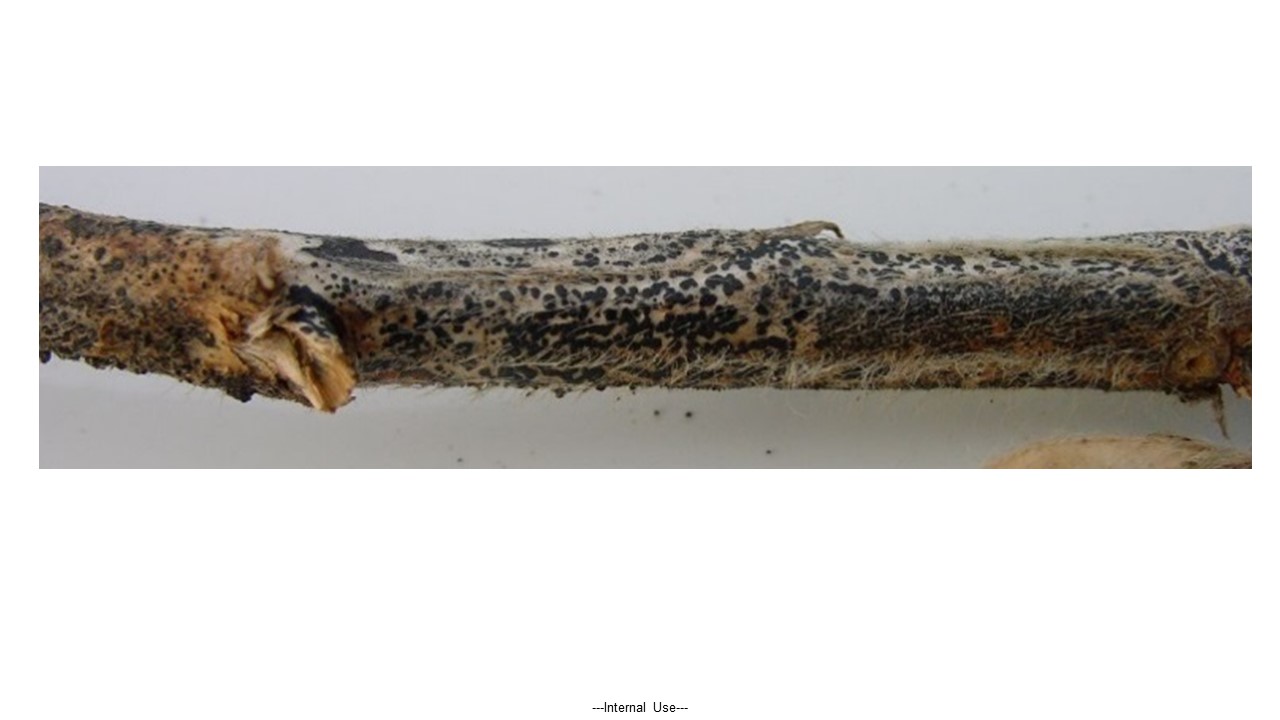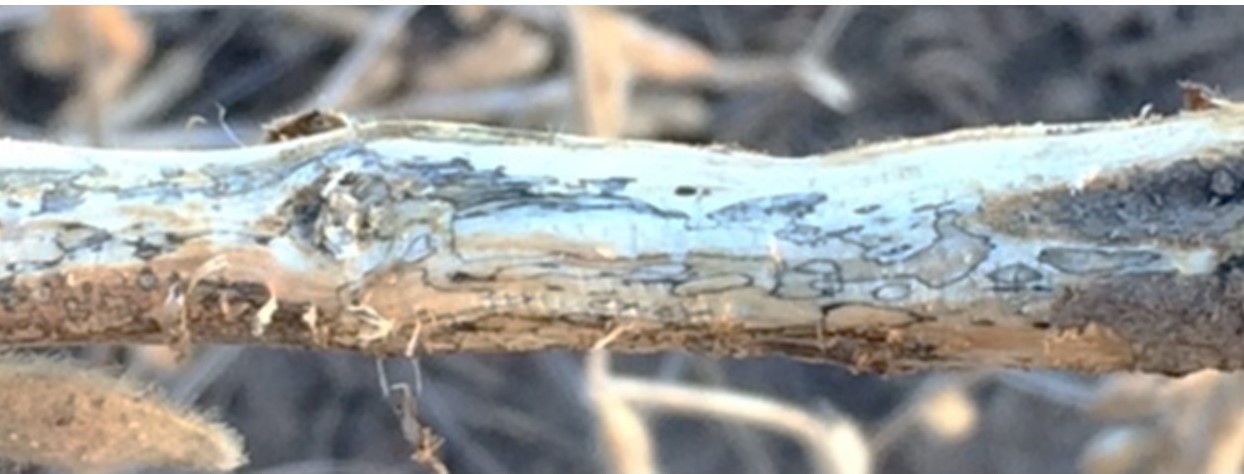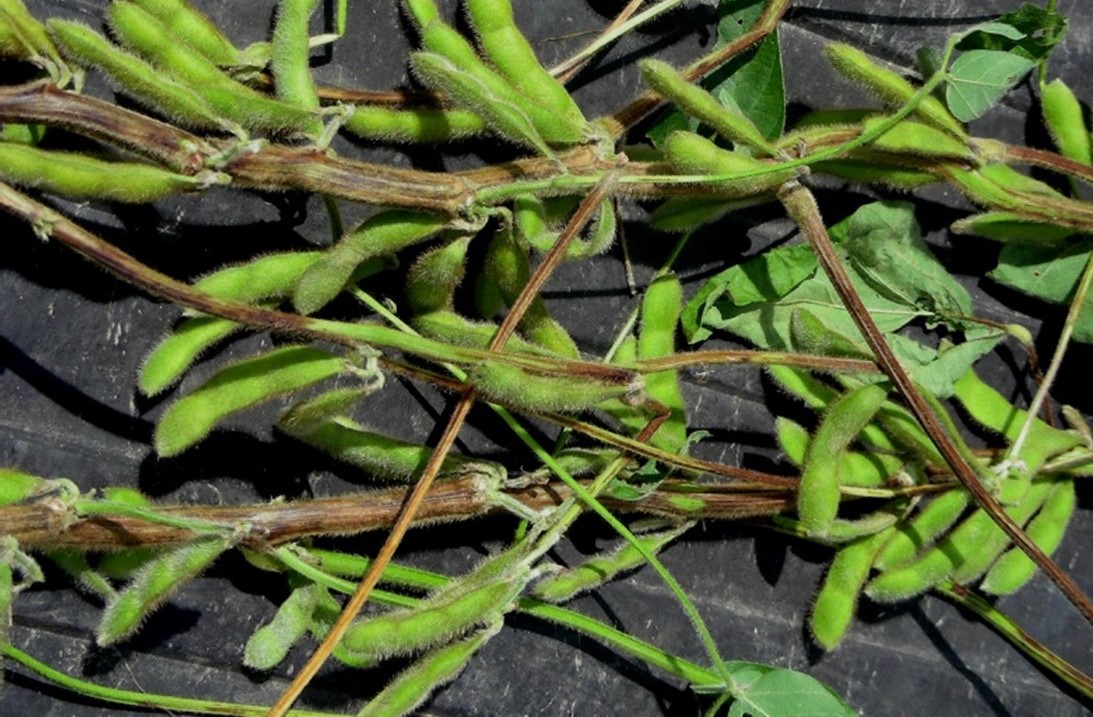Pod and Stem Blight
- Leaves may have water soaked margins that are grey in color, and/or small black specks called pycnidia. The black dots may be more prevalent on leaves and petioles that have fallen on the ground. It is also possible that no symptoms are visible.
- Stems have parallel rows of pycnidia on mature plants (Figure 2). These black dots are often mistaken for anthracnose stem blight and charcoal rot, which have unorganized black specks on the stems (Figure 3 and 4).
- Pycnidia on pods will not be in organized rows and will begin to occur near the end of the reproductive stages around R6 and R8.
- If the plant is infected, there is a possibility that all of the seeds that are produced are also infected. The seeds will produce seedlings with orange lesions on the cotyledon, and red/brown mark on the hypocotyl. This looks similar to Phomopsis seed decay.

Figure 2. Soybean infected with pod and stem blight disease have black specks that are in linear rows.

Figure 3. Anthracnose infected soybean stem with black lesions in an unorganized pattern.

Figure 4. Black, dusty microsclerotia in an unorganized pattern on the outer stem are a characteristic symptom of charcoal rot


Figure 5. Dark zone lines on the lower stem are an indicator of Diaporthe fungal infection.
Phomopsis Seed Decay
- Seeds appear shriveled, cracked, elongated, and may be covered with a thin white layer of mold. Seeds with a critical amount of infection may not germinate.
- Infections are not always visible and may be on the inside on the seed coat.
- Infected seeds have symptoms that look similar to the symptoms of white mold and downy mildew.
- Pods are more likely to be infected if they are near the bottom of the plant.
- Seedlings develop orange and red-brown lesions on the cotyledons and streaks on the lower part of the stem near the soil.
- Small black specks of pycnidia may occur on the seeds.
Stem Canker
- Infection most often occurs during the early season, but cankers do not begin forming until after flowering.
- Nodes near the bottom of the plant will have gray/brown lesions with red/brown margins and sunken cankers around R1. These lesions can wrap the stem, or grow up the stem several nodes (Figure 6).
- Leaves may begin to wilt and interveinal chlorosis and necrosis are present. Leaves do not drop, but stay attached after the plant dies. Plants often die when they are infected with this disease.
- Stem canker may be present in small areas throughout a field, or an entire field can be infected.
- Stem canker is often confused with phytophthora, anthracnose, brown stem rot, charcoal rot, sudden death syndrome, and herbicide, frost, and lightning damage.
- If the taproot of the plant is split and the inside on the root displays a color that is not normal, the plant most likely has brown stem rot or sudden death syndrome, not stem canker.
- Stem canker is more likely to infect fields with high fertility and organic matter.

Figure 6. Stem canker in soybeans caused by the fungus Diaporthe.








